#Brinjal gravy
Explore tagged Tumblr posts
Text
Brinjal curry for Biryani - Recipe in pics
Also in the blog now: Spices – A picTip of the day – Avoid spilling of boiling liquidCurd rice, kovaikai poriyal, potato roast -Perfect lunch Feb 13 2023Easy Baguettes- recipe pics Check out my Instagram profile and highlights for more pics and recipes – @Fhareena #parveenskitchen #foodblogger
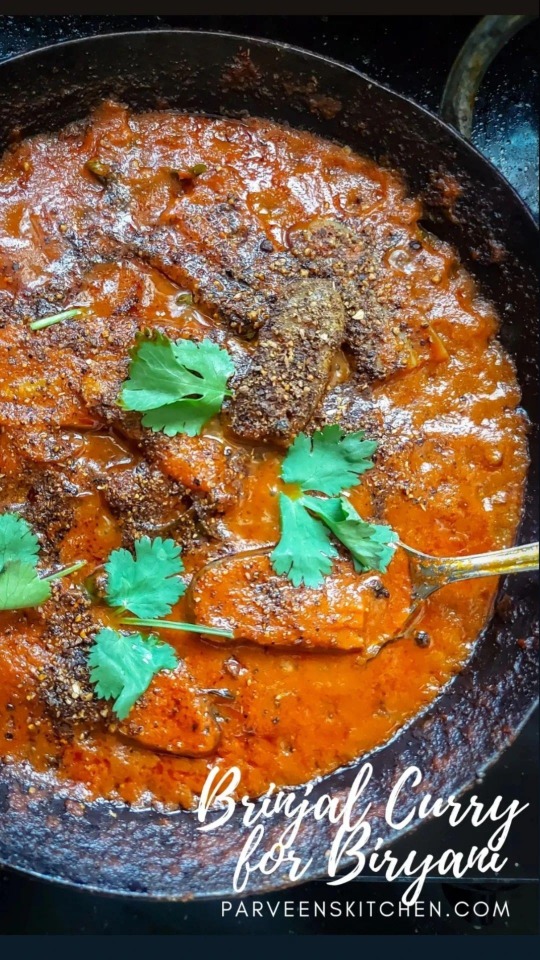
View On WordPress
0 notes
Text
I love liquid or semi-liquid foods that taste more delicious the next day. ofc soups and broths and stews and curries and rassams and usals and all similar iterations but also chili and pav bhaji and even bharit
#A mutual has been posting about chili and it made me think about kheema and pav bhaji#and how all such gravy-ed foods taste so much better the next day as the ingredients get to soak in the liquid#Not soak but I can't remember the culinary term for 'murne'. marinate? stew?#Vangyache bharit (baingan bharta) also tastes so good the next day#I mean. it has garlic and brinjal - match made in heaven#I don't even need to say anything about any rassa or amti or usal everyone knows day-old curry is the best#Now I'm craving pav bhaji. or kheema pav. or misal pav. anything with bread really#food
16 notes
·
View notes
Text
Layered Veg Dum Biryani
Check out the Special Layered Veg Dum Biryani Recipe on our website - https://vegrecipestamil.com/layered-veg-dum-biryani.../

#veg#vegetable#biryani#recipe#dum#dumbiryani#vegbiryani#biryanirecipe#rice#basmatirice#raita#onions#bread#brinjal#gravy#kulambu#kuzhambu#tasty#spicy#yummy#food
3 notes
·
View notes
Text
The restaurant had a 50% off signature specialties with every spending of S$30 so we also had the Stewed Ee-Fu Noodle (干烧伊面) while my brother’s table had the Wok-Fried Traditional Hometown Vermicelli (家乡炒面线). I love my ee-fu noodles as it had soaked up the flavourful gravy even though it doesn’t comes with much ingredients other than mushrooms and beansprouts.
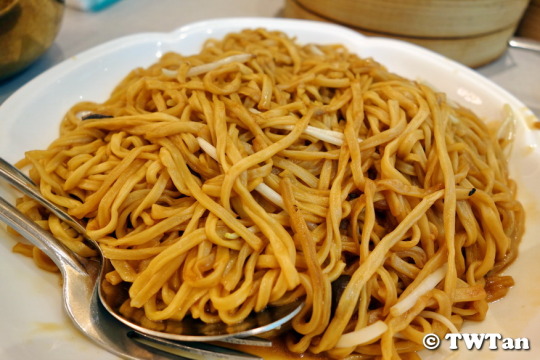
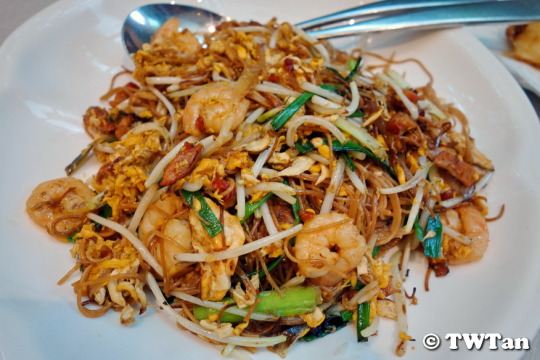
Sis recommended this Crispy Eggplant with Pork Floss (肉松炸茄子) which was a delight eat. If you are the type that do not like the mushy texture of the aubergine when cooked, you will enjoy this dish. In fact, you might never know that you are eating brinjal as this one is fried crispy and sprinkled liberally with savoury pork floss.


To end the luncheon, we had Double-Boiled Peach Resin with American Ginseng (泡参银耳炖桃胶) and Mango Puree with Sago and Pomelo (杨枝甘露). My table only took the chilled mango puree with sago pearls and pomelo pulps which is refreshing and not too sweet.
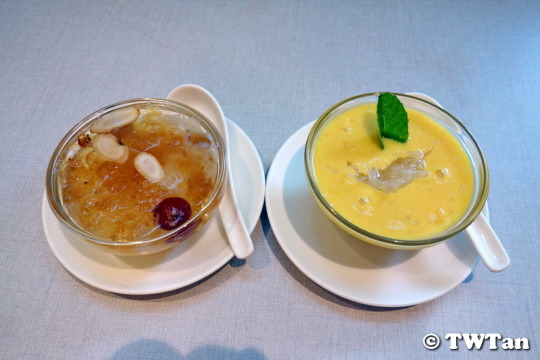
PS - The Canton Paradise at Junction 8 had closed this branch.
#Canton Paradise#乐天小香港#Junction 8#Restaurant#Dim Sum#点心#Stewed Ee-Fu Noodle#干烧伊面#Wok-Fried Traditional Hometown Vermicelli#家乡炒面线#Crispy Eggplant with Pork Floss#肉松炸茄子#Aubergine#Brinjal#Peach Resin with American Ginseng#泡参银耳炖桃胶#Double-Boiled#Mango Puree with Sago and Pomelo#杨枝甘露#Chilled#Cantonese#Dessert#Food#Buffetlicious
31 notes
·
View notes
Text
Indulge in the Irresistible Veg Dum Biryani and Gutti Vankaya Indian Biryani at Hyderabad Wala in The Colony, Texas

At Hyderabad Wala, we take immense pride in bringing you authentic flavors that reflect the heart of traditional Hyderabadi cuisine. Our menu showcases a vibrant array of biryanis, each prepared with dedication and an unwavering commitment to taste. Today, we shine the spotlight on two exquisite vegetarian delicacies that have captured the hearts (and taste buds) of food enthusiasts – the Veg Dum Biryani and the Gutti Vankaya Biryani.
Veg Dum Biryani – A Vegetarian Delight with Layers of Flavor
The Veg Dum Biryani is a classic example of how vegetables and rice can unite to create a symphony of taste. At Hyderabad Wala, our version is lovingly prepared using long-grain basmati rice, farm-fresh vegetables, and a secret blend of aromatic spices. Every layer of this biryani is cooked over a slow flame (known as the ‘dum’ process) to ensure that the flavors mingle and develop, resulting in a hearty dish with a soul-stirring aroma.
What Makes Our Veg Dum Biryani Special?
Flavorsome Rice: Each grain of basmati rice is soaked in the fragrance of saffron, herbs, and authentic Hyderabadi masalas, delivering a burst of flavor in every bite.
Garden-Fresh Vegetables: We use a medley of vegetables like carrots, beans, peas, and potatoes that add crunch and nutrition to the biryani.
Perfectly Balanced Spices: Our carefully crafted spice blend ensures a perfect balance of heat, sweetness, and earthiness.
Ghee Magic: The gentle use of ghee enhances the richness of the biryani without overpowering its original flavors.
Gutti Vankaya Biryani – A Regional Treasure
If you crave bold flavors with a touch of tradition, the Gutti Vankaya Biryani is a must-try! A true gem from Andhra Pradesh, this dish features tender stuffed baby brinjals (eggplants) simmered in a thick, spicy masala. The stuffed brinjals are nestled within layers of fragrant rice, allowing their smoky, spicy essence to seep through the entire biryani.
Key Highlights of Our Gutti Vankaya Biryani:
Stuffed Brinjals with Love: We handpick baby brinjals and stuff them with a special blend of roasted spices, peanuts, and sesame seeds. This ensures a burst of flavor and a delightful texture.
Rich, Earthy Masala: The masala cooked with the brinjals creates a luscious gravy that blends beautifully with the rice.
Aromatic Rice Layers: Each layer of basmati rice is steamed to perfection, absorbing the essence of the masala and brinjals, resulting in a deliciously flavorful experience.
Authenticity at Its Core: Our Gutti Vankaya Biryani stays true to the roots of this regional specialty, making it a must-have for food connoisseurs.
Why Choose Hyderabad Wala?
Our goal at Hyderabad Wala is to offer you not just a meal but an unforgettable culinary journey that connects you with the rich heritage of Hyderabadi cuisine. Our biryanis, made with passion and the finest ingredients, reflect the traditions that have been passed down through generations. We take pride in being the best Indian restaurant in the colony with a focus on providing authentic and delicious meals that leave you craving more.
Relish Our Specialties
Whether you’re a vegetarian by choice or seeking new flavors to explore, the Veg Dum Biryani and Gutti Vankaya Biryani are dishes that will leave you spellbound. Experience their irresistible taste and aromatic goodness with every bite!
Dine-In or Order Online Enjoy our biryanis at Hyderabad Wala’s welcoming ambiance or bring the flavors home with our convenient online delivery. Whichever you choose, we guarantee an unparalleled experience that will make you return for more.
Taste Tradition, Taste the Best – Hyderabad Wala
Come, experience our Veg Dum and Gutti Vankaya Biryani, and discover why we’re the go-to Hyderabadi restaurant for food lovers in the colony. Treat yourself to authentic Hyderabadi flavors with a vegetarian twist!
#indian restaurant in texas#indian restaurant in the colony#dinner#biryani#hyderabad wala restaurna the colony texas
0 notes
Text

大家好! While the genocide in Gaza continues, Palestinians are telling the world their stories of resilience. I'm sharing some of them so that more voices can be heard. Meals are basic in the area - flat bread and food relief they receive from humanitarian aid agencies. Many of them are very skinny because they don't have enough to eat. These people are making the most of what little they have during a period of intense hardship and yet their eyes are full of kindness, their smiles full of warmth. It's no wonder that humanitarian aid volunteers and workers are so amazed by their strength and courage.


youtube
youtube
youtube
Deepavali was a public holiday. Pa and I visited a popular Japanese grill for the first time. They do serve meat, but we were most interested in their fish. We shared okra and brinjal skewers, gindara shioyaki (grilled cod seasoned with salt) and unagi shirayaki (grilled eel seasoned with sea salt). By opting for shioyaki and shirayaki, both dishes were less salty than the versions that come with sauces. There was plenty of food and it was so yummy, both of us polished off everything, including our rice. I was happy to see Pa enjoy our nutritious, moderately healthy meal. After that, we had a chat over fragrant local coffee.



youtube
youtube
MI told SC and me about a new fish soup stall which opened at a coffee shop near the office, so we went to try their food. Besides standard batang (mackerel), they serve hong ban (red garoupa and chang yu (pomfret). The last is my favourite fish and I ordered it with thick bee hoon (vermicelli). Those large, thick chunks of fish were so fresh and tender! There was also a lot of bee hoon, a slice of savoury fish cake with veggie bits, lots of sliced ginger and vegetables at the bottom of the bowl. The broth was clear, light and not too salty. This was SO delicious, I'm definitely returning to have it again as well as try the other fish!

MS and I caught up on a rainy afternoon. We wanted red meat to keep warm, so we visited a Hokkien restaurant which specialises in hearty comfort food. We ordered pig's stomach and fish maw soup, oyster and Iberico pork omette, bittergourd with Iberico pork and steamed egg custard and a bowl of rice each. Large chunks of springy fish maw and pig's stomach added tons of flavour to the peppery broth, which was milky thanks to lots of collagen. There were generous portions of plump juicy oysters in the fragrant omelette. As for the bittergourd, OH MY WORD, this was DIVINE to the max! The pork was tender, the egg smooth and the gravy heavenly with rice. The meal was so delicious, I immediately texted LL, my expat friend from China, about this restaurant. We'll come here when we catch up again.



youtube
Heartwrenching scenes and anguished cries of grief coming out of Gaza have many of us teary. Israel and US politicians may gloat at so much Palestinian suffering. Elsewhere in the world, we do not; our hearts go out to them instead. Everyone can relate to the pain of losing a loved one; we can only imagine how magnified this pain is when the loss is due to Israel's ongoing genocide in Gaza. Over 43,000 Palestinians have died and over 102,000 wounded, many of them innocent civilians. I'm so glad my country will deliver our fifth tranche of aid to Gaza. I've not seen this level of devastation and suffering, ever. And it really tugs at my heartstrings. 下次见!
0 notes
Text
Goan Cuisine Beyond Fish Curry
Goan cuisine paints a vivid picture of flavors, colors, and traditions, reflecting the region’s rich cultural heritage. Influenced by a blend of Indian, Portuguese, and indigenous culinary practices, Goan food offers a unique gastronomic experience that delights both locals and visitors alike. For those looking to buy a villa in Goa, immersing in Goan cuisine is an essential part of enjoying your time in this beautiful coastal paradise, especially from the comfort of your own luxury villas in Goa.
At the heart of Goan cuisine lies the iconic Fish Curry, a dish that embodies the essence of Goan flavors. This curry is made with the freshest catch of the day, simmered in a symphony of spices, coconut milk, and tamarind, creating a tangy and aromatic masterpiece. Imagine enjoying this staple dish in one of your luxury villas in Goa, where the rich, creamy texture of the coconut milk perfectly balances the tanginess of the tamarind.
Seafood Delights
Given its coastal location, it’s no surprise that seafood plays a starring role in Goan cuisine. Beyond Fish Curry, fresh catches like prawns and crabs are prepared in a variety of ways, from spicy curries to grilled dishes. Another must-try is Prawn Balchão, a spicy and tangy prawn pickle that packs a punch with every bite. For those who choose to buy a villa in Goa, having access to such local delicacies enhances the appeal of Goa homes. The sea’s bounty is celebrated in every Goan kitchen, ensuring a feast for the senses in your luxury villa in Goa.
Satisfying Curries
Goan curries are renowned for their rich and complex flavors. Vindaloo is a must-try for those who enjoy a spicy kick. Originating from Portuguese cuisine, this dish combines meat marinated in vinegar and garlic with a blend of spices for a hearty and flavorful experience. For a milder option, there’s Xacuti, a coconut-based curry made with roasted spices and chicken or lamb. Each curry is a symphony of spices, promising an unforgettable culinary adventure. Enjoying these dishes from your own luxury villas in Goa adds a special touch to the dining experience.
Vegetarian Fare
Goan cuisine isn’t just about seafood; it also offers a variety of delicious vegetarian dishes. Bhaji (vegetable fritters), Goan-style stuffed brinjal, and Sol Kadhi, a refreshing drink made from kokum and coconut milk, are just a few examples. These dishes highlight the use of local ingredients, such as kokum, a sour fruit that adds a unique flavor to many recipes. For those interested in Goa homes, the variety of vegetarian offerings ensures that every palate is pleased, enhancing the experience of owning a villa in Goa.
Delectable Breads
No Goan meal is complete without the staple bread known as Pão. This soft, fluffy bread is often served with curries or used to soak up delicious gravies. You can also find Bhakri, a thicker, unleavened bread made from rice or millet, which pairs perfectly with spicy dishes. These breads are not just accompaniments but integral parts of the Goan dining experience, adding texture and flavor to every meal. Owning a luxury villa in Goa allows you to enjoy these traditional breads freshly made in your own kitchen.
Sweet Treats
To satisfy your sweet tooth, indulge in traditional Goan desserts like Bebinca, a multi-layered coconut pudding made with coconut milk, sugar, and eggs. Doce, a sweet made from coconut and jaggery, is another delightful treat that showcases the region’s love for coconut in various forms. These desserts are perfect for those considering Goa homes or those looking to buy a villa in Goa and wanting to experience local flavors daily.
Local Beverages
Quench your thirst with Goan drinks that perfectly complement the local cuisine. Feni, a potent spirit made from cashew apples or coconut sap, is a must-try for those looking to experience local flavors. For a refreshing non-alcoholic option, sip on Nimbu Pani (lemonade) or Sol Kadhi. These beverages enhance the dining experience, adding a touch of local charm to your meals. Savor these drinks in the comfort of your luxury villa in Goa, further enriching your experience.
The Chapter Helps You Immerse Yourself in Goan Culinary Experiences
To truly immerse yourself in Goan cuisine, consider taking a cooking class or joining a food tour. These experiences offer a hands-on approach to learning about the ingredients, techniques, and cultural significance of Goan dishes. At The Chapter, we can help you find local culinary experiences that will enhance your understanding of Goan flavors. Whether you are looking to buy a villa in Goa or explore other Goa homes for sale, these culinary adventures offer a deeper connection to this coastal paradise. Explore these flavors, and let the culinary magic of Goa leave an indelible mark on your palate, all from the comfort of your own luxury villa in Goa
0 notes
Text
Seasonal Vegetables to Buy Online in Chennai: A Month-by-Month Guide

Navigating the vibrant markets of Chennai can be an exhilarating experience, but sometimes convenience takes precedence. For those who prefer the ease of online shopping, knowing which vegetables are in season can ensure that you get the freshest and most flavorful produce. This comprehensive month-by-month guide will help you make informed choices about the seasonal vegetables to Buy Fresh vegetables online.
January: A Fresh Start to the Year
Carrots and Beets
January is the perfect time to indulge in root vegetables. Carrots and beets are at their peak, offering a sweet and earthy flavor ideal for soups, stews, and salads.
Cauliflower
Versatile and nutritious, cauliflower is abundant in January. Use it in curries, roasted dishes, or even as a low-carb alternative to rice.
Green Peas
Fresh green peas are a seasonal delight in January. They add a sweet crunch to any dish and are excellent in pulao, parathas, and stir-fries.
February: Embrace the Cool
Spinach
Rich in iron and vitamins, spinach thrives in February's cooler climate. Perfect for palak paneer, spinach salads, and smoothies.
Radishes
Crisp and slightly spicy, radishes add a refreshing crunch to salads and pickles. February's radishes are particularly vibrant and flavorful.
Tomatoes
Though available year-round, tomatoes are especially juicy and flavorful in February. Use them in gravies, sauces, or simply as a salad ingredient.
March: The Transition Month
Cabbage
Cabbage is plentiful in March. Its crunchiness and mild flavor make it perfect for stir-fries, salads, and Indian curries.
Sweet Potatoes
A nutritious and sweet option, sweet potatoes are great for baking, frying, or adding to curries. Their versatility makes them a March favorite.
Capsicum
Also known as bell peppers, capsicums add color and a slight sweetness to your dishes. March is the best time to enjoy them fresh and crisp.
April: Warmer Days Ahead
Cucumbers
As temperatures rise, cucumbers offer a hydrating and cooling effect. Perfect for salads, raitas, and as a snack.
Pumpkin
Pumpkin is versatile and nutritious, ideal for soups, curries, and desserts. April's pumpkins are tender and full of flavor.
Bottle Gourd
Also known as lauki, bottle gourd is perfect for summer. It is light, nutritious, and can be used in soups, curries, and desserts.
May: Peak Summer Produce
Bitter Gourd
Despite its bitterness, bitter gourd is highly nutritious and popular in Indian cuisine. May offers the freshest produce, ideal for stir-fries and pickles.
Lady’s Finger
Also known as okra or bhindi, lady's finger is perfect in curries and stir-fries. May is when they are most tender and flavorful.
Brinjal
Brinjal, or eggplant, comes in many varieties, all abundant in May. Use it in bharta, sambar, or as a grilled vegetable.
June: Monsoon Harvest
Green Beans
Green beans are crisp and versatile. They can be used in curries, salads, and stir-fries, providing a fresh crunch.
Amaranth Leaves
Nutritious and versatile, amaranth leaves are excellent in soups, stews, and stir-fries. June is when they are most tender.
Cluster Beans
Also known as guar, cluster beans are great for curries and stir-fries. June is the peak season for these beans.
July: Mid-Year Bounty
Snake Gourd
Snake gourd is perfect for light, nutritious dishes. July is the best time to enjoy it in curries, stews, and salads.
Ash Gourd
Ash gourd, or winter melon, is ideal for soups, curries, and desserts. July's produce is fresh and flavorful.
Drumsticks
Drumsticks are a popular addition to sambar and other South Indian dishes. July offers the freshest and most tender drumsticks.
August: A Rich Harvest
Yam
Yam is a nutritious root vegetable, perfect for curries and fries. August is when it is most abundant and flavorful.
Chow Chow
Also known as chayote, chow chow is excellent in curries and stews. Its mild flavor and crunchy texture are best in August.
Spinach
Spinach makes a return in August, offering fresh greens for salads, curries, and smoothies.
September: The Harvest Continues
Colocasia Leaves
Colocasia leaves are used in traditional dishes like patra. September offers the freshest leaves, perfect for cooking.
Ivy Gourd
Also known as tindora, ivy gourd is great for stir-fries and curries. September's produce is particularly fresh and tender.
Turnips
Turnips are versatile and nutritious, ideal for roasting, stews, and curries. September is when they are at their best.
October: Prepping for Festivities
Fenugreek Leaves
Fenugreek leaves add a unique flavor to dishes. October is the best time to enjoy them in curries, parathas, and salads.
Carrots
Carrots return in October, offering sweet and crunchy goodness for salads, soups, and desserts.
Radishes
Radishes are back, adding a spicy crunch to your dishes. October's radishes are fresh and flavorful.
November: Cool Season Crops
Green Peas
Green peas return in November, perfect for pulao, parathas, and salads.
Cauliflower
Cauliflower is back, versatile for curries, roasted dishes, and as a rice substitute.
Cabbage
Cabbage is abundant again, ideal for stir-fries, salads, and curries.
December: Festive Flavors
Spinach
Spinach returns, offering fresh greens for a variety of dishes.
Tomatoes
December tomatoes are juicy and flavorful, perfect for sauces, gravies, and salads.
Beets
Beets are back, adding sweetness and color to your dishes.
Conclusion
Eating seasonal online vegetable shopping in chennai is not only a delicious and nutritious choice but also a sustainable one. By following this month-by-month guide, you can ensure that you always have the freshest produce on your plate. Chennai's vibrant online market offers a plethora of options, making it easy to incorporate seasonal vegetables into your diet. Enjoy the bounty of each season and support local farmers by choosing seasonal produce.
0 notes
Text
#sesame oil price#oil#gingelly oil for cooking#best sesame oil mill in madurai#sesame oil benefits#sesameoil#sesame oil#cooking with sesame oil#gingelly oil online#gingelly oil benefits for hair
0 notes
Text
BRINJAL ENNEGAYI RECIPE ANDHRA STYLE IN 2024
Brinjal Ennegayi is a traditional dish that hails from the rich culinary heritage of Andhra Pradesh, a state known for its flavorful and aromatic cuisine. Ennegayi, also known as "Ennai Kathirikai" in Tamil Nadu, is a dish where brinjals (eggplants) are cooked in a spicy, tangy, and coconut-based gravy. In this article, we'll explore the authentic Andhra style of preparing Brinjal Ennegayi, reflecting the culinary trends of 2024.
Historical Background of Andhra Style Cuisine
Andhra Pradesh, situated in South India, boasts a diverse range of culinary traditions, influenced by its geography, history, and culture. The cuisine is renowned for its bold flavors, extensive use of spices, and the perfect balance of tanginess and heat. Andhra cuisine has evolved over centuries, with each region within the state contributing its unique recipes and cooking techniques.
Ingredients Required for Brinjal Ennegayi
To prepare Brinjal Ennegayi, you'll need:
Fresh brinjals (eggplants)
Coconut
Tamarind
Mustard seeds
Dry red chilies
Curry leaves
Coriander seeds
Turmeric powder
Jaggery (optional)
Salt
Oil
Step-by-Step Cooking Process
Preparing the Masala Paste
Heat oil in a pan and roast coriander seeds, dry red chilies, and grated coconut until golden brown.
Allow the mixture to cool, then grind it into a smooth paste along with tamarind and salt.
Frying the Brinjals
Wash and slit the brinjals lengthwise without cutting through.
Stuff the brinjals with the prepared masala paste.
Cooking with the Masala Paste
Heat oil in a pan and add mustard seeds and curry leaves.
Add the stuffed brinjals and sauté until they are partially cooked.
Pour the remaining masala paste over the brinjals and add water.
Cover and cook until the brinjals are tender and the gravy thickens.
Tips for Making the Perfect Brinjal Ennegayi
Choose small and tender brinjals for better taste and texture.
Adjust the spice levels according to your preference.
Allow the brinjals to marinate in the masala paste for a few minutes for enhanced flavor.
Health Benefits of Brinjal
Brinjal is a nutritious vegetable that is low in calories and rich in fiber, vitamins, and minerals. It aids in digestion, improves heart health, and may even help in managing diabetes.
Serving Suggestions
Brinjal Ennegayi pairs well with steamed rice, roti, or dosa. Garnish with fresh coriander leaves before serving for added freshness and flavor.
Variations of Brinjal Ennegayi
Some variations include adding peanuts or sesame seeds to the masala paste for a nutty flavor.
You can also experiment with different types of brinjals or add vegetables like potatoes and peas for a twist.
Why Brinjal Ennegayi is Popular in Andhra Cuisine
Brinjal Ennegayi is a beloved dish in Andhra cuisine due to its rich flavors, comforting warmth, and versatility. It reflects the essence of traditional cooking while also adapting to modern tastes and preferences.
In conclusion, Brinjal Ennegayi is a delightful dish that captures the essence of Andhra cuisine. With its bold flavors and aromatic spices, it's sure to tantalize your taste buds and leave you craving for more.
FAQs
Can I use any variety of brinjals for this recipe?
While you can use any variety, small and tender brinjals work best for Brinjal Ennegayi as they have a sweeter taste and tender texture.
Is Brinjal Ennegayi spicy?
The level of spiciness can be adjusted according to personal preference by varying the amount of red chilies used in the recipe.
Can I make Brinjal Ennegayi ahead of time?
Yes, you can prepare the dish ahead of time and reheat it before serving. In fact, the flavors tend to develop even more when allowed to sit for some time.
What are some suitable alternatives for tamarind in this recipe?
You can use lemon juice or dry mango powder (amchur) as substitutes for tamarind.
Is Brinjal Ennegayi a vegan dish?
Yes, Brinjal Ennegayi is a vegan dish as it does not contain any animal products.
0 notes
Text
Khandeshi Cuisine and Matrimonial Feasts: A Gastronomic Journey through Khandeshi Weddings
Khandeshi weddings are not only a celebration of love and union but also a gastronomic journey that showcases the rich and diverse cuisine of the Khandesh region in Maharashtra, India. These matrimonial feasts are a testament to the culinary traditions and flavors that define Khandeshi culture.
The Khandeshi cuisine, renowned for its bold and spicy flavors, takes center stage during wedding celebrations. The traditional wedding feast, often served on banana leaves or large plates, features an array of mouthwatering dishes that cater to a variety of tastes and preferences.
One of the highlights of Khandeshi cuisine is the use of spices, particularly in gravies and curries. Dishes like "Misal Pav," "Vangi Bhath," and "Puran Poli" are known for their robust flavors, thanks to a blend of aromatic spices and herbs. The extensive use of ingredients like sesame seeds, peanuts, and coconut also adds depth and texture to the dishes.
The lavish spread typically includes both vegetarian and non-vegetarian options to accommodate the diverse dietary preferences of guests. For meat lovers, dishes like "Mutton Sukka," "Kheema," and "Tambda Rassa" (spicy red curry) are popular choices. Vegetarians can relish dishes like "Bharli Vangi" (stuffed brinjals), "Zunka Bhakar," and "Sabudana Khichdi."
Another standout element of Khandeshi cuisine is the use of locally sourced ingredients, often cultivated in the region. Fresh vegetables, grains, and lentils are a staple, and their quality and flavor are unmatched. This emphasis on locally sourced produce adds authenticity and uniqueness to Khandeshi dishes.
The matrimonial feast also includes an assortment of sweets and desserts that cater to the sweet tooth of guests. Traditional sweets like "Puran Poli," "Shrikhand," and "Modak" are served to round off the meal on a sweet note.
In essence, Khandeshi cuisine and matrimonial feasts are a culinary journey that reflects the vibrant cultural heritage of the region. These flavorsome dishes not only tantalize the taste buds but also serve as a testament to the warmth and hospitality of Khandeshi weddings, where food becomes a means of celebrating love, togetherness, and tradition.
1 note
·
View note
Text
Brinjal curry for Biryani - Recipe in pics
View On WordPress
#biryani sidedish#Brinjal#Brinjal curry#Brinjal curry for biryani#Brinjal gravy#Easy recipes#Eggplant curry#Healthy#Indian recipes#sidedish gravy#vegetable curry
0 notes
Text
Exploring the Exquisite Jain Food Menu in India

Introduction:
India, a land known for its diverse culinary heritage, has a plethora of regional cuisines that cater to various dietary preferences and religious practices. One such culinary tradition is Jain cuisine, which has gained recognition for its unique and delectable offerings. Jain food adheres to the principles of Jainism, an ancient Indian religion that emphasizes non-violence and non-possession. With its emphasis on vegetarianism and strict rules against the consumption of certain ingredients, Jain cuisine offers a remarkable range of dishes that are not only delicious but also spiritually significant. Let's embark on a culinary journey through the famous Jain food menu in India.
Starters:
Papad Churi: This traditional Jain snack consists of crushed papad mixed with a variety of spices, herbs, and sometimes even sev (fried gram flour vermicelli). It is a crispy and tangy starter that perfectly complements any meal.
Kachori: Jain Kachori is a deep-fried pastry filled with a delectable mixture of lentils, spices, and aromatic herbs. It is a popular Jain street food snack, often served with tangy tamarind chutney.
Main Course:
Dal Baati Churma: A quintessential Rajasthani dish, Dal Baati Churma is a wholesome meal consisting of lentil curry (dal), baked wheat bread rolls (baati), and a sweet crushed wheat dessert (churma). The Jain version replaces onion and garlic with asafoetida (hing), resulting in a delightful and satiating meal.
Aloo Paratha: Aloo Paratha is a beloved stuffed bread that finds its place in the heart of every Indian food enthusiast. In the Jain version, the paratha is stuffed with a simple yet flavorful mixture of mashed potatoes, spices, and fresh herbs. It is usually accompanied by yogurt and pickle.
Gujarati Undhiyu: Undhiyu is a Gujarati specialty that consists of a medley of seasonal vegetables, such as purple yam, raw banana, brinjal, and fenugreek dumplings, cooked in a spiced coconut-based gravy. This wholesome and nutritious dish is a highlight of Jain cuisine in Gujarat.
Paneer Tikka Masala: Paneer, a type of Indian cottage cheese, is a staple in Jain cuisine. Paneer Tikka Masala is a rich and creamy dish where cubes of paneer are marinated, grilled, and then cooked in a tomato and cashew-based sauce. It is best enjoyed with naan or rice.
Desserts:
Shrikhand: Shrikhand is a popular Jain dessert made from strained yogurt, sweetened with sugar, and flavored with cardamom, saffron, and sometimes, chopped nuts. It is a refreshing and creamy sweet dish often served chilled.
Malpua: Malpua is a traditional Indian pancake made from a batter of flour, milk, and sugar. In the Jain version, it is prepared without any ingredients that are restricted in Jainism, such as eggs. These golden-brown pancakes are deep-fried and soaked in sugar syrup, making them irresistibly sweet and indulgent.
Conclusion:
Jain cuisine is a testament to the rich culinary heritage of India, combining traditional flavors with the principles of non-violence and spirituality. The famous Chinese Restaurant Menu India offers a wide array of vegetarian delicacies, each crafted with meticulous care and adherence to Jain dietary guidelines. From starters to main courses and desserts, Jain cuisine showcases the diversity and vibrancy of Indian vegetarian cooking. So, next time you find yourself exploring the culinary landscape of India, don't forget to indulge in the flavorsome and soul-s
0 notes
Text
Different Variety of Biryani | Online Blogger Pro
Biryani is the best dish because it has a lot of different ingredients and is full of flavor. It is a common dish in South Asia, where, depending on the state and culture, it can be served in a variety of ways.
The components of biryani are rice, meat (goat, chicken, beef, seafood, and lamb), and condiments. Occasionally with the potatoes and eggs or meat. https://www.onlinebloggerpro.com/
Origin of Biryani In India, biryani is a popular dish for celebrations. According to some research, the Mughal emperor introduced the term "biryani," also known as "biryan" or "beriyan," to India in the Middle Ages. There are numerous varieties of biryani in India, each with slightly different condiments.
The biryani originated in Mughal India, according to historical records. But researchers say that the dish was brought to India by the Babur conquerors before the Mughal emperor. The book Biryani was written by Pratibha Karan; This South Indian dish was brought with them by Arab traders. The preparation of the biryani dish is similar to that of pulao. Both are haphazard.
India's pulao is a typical dish in Focal Asian and Center Eastern cooking. The flavors and methods of cooking Pulao, which only require a light gravy and take less time to prepare, are referred to as "one-pot meals." Gravy and a variety of condiments are part of biryani. The bottom layers frequently take longer to cook. Biryani is more spicy and requires more effort to prepare.
Despite differences of opinion and cooking methods, the end result is a delicious meal that pleases everyone.
Ingredients for Biryani The main ingredient in biryani is rice, but the other ingredients can vary by region and meat type (goat, chicken, beef, prawn, fish, and lamb). Occasionally include meat and vegetables.
Ghee, mint, ginger and garlic paste, onions, tomatoes, green chillies, fennel seeds, pepper, cloves, cardamom, cinnamon, bay leaves, coriander leaves, nutmeg, mace, and occasionally saffron are some of the condiments used in biryani. Any place you are, the flavors will contrast.
Biryani can be served with a variety of sweet, sour, or spiced side dishes, such as onion raita, brinjal, Korma, boiled eggs, and salad. On the other hand, many of the accompaniments include seafood.
Indian biryani varieties There are numerous varieties. The various kinds of biryani came from Muslim neighborhoods in Delhi, Rampur, Lucknow, and other north Indian cities. South India, particularly the Tamil Nadu regions of Ambur, Vaniyambadi, Dindigul, Chettinad, and Salem, as well as Kerala, Karnataka, Hyderabad, and Telangana's Malabar region. The Muslim community brought a lot of their food culture with them when they arrived.
Outside of the Indian subcontinent, the varieties of biryani varied. There are many different kinds of biryani on the Indian subcontinent.
One of the most well-known biryanis in the Indian subcontinent is the Ambur/Vaniyamabadi Biryani. It is in the neighborhood of Tirupattur. It is said to have been introduced during the time that the Nawabs of Arcot ruled the region. The Biryani, which is made with Jeera samba rice or basmati rice, is known as Ambur Biryani. its most pronounced flavor and smell. The curd and spice mixture will ensure that the rice and meat are completely absorbed into the gravy. In South India, ambur-style biryani is a popular street food.
In India, chettinad biryani is a well-known dish. They serve the Biryani with a gravy made of goat or chicken meat. Podi kozhi or nenju elumbu kuzhambu, a popular choice for the meat in the biryani, is a popular choice for the gravy. Jeerka samba rice is used to prepare the biryani.
Due to its distinctive cuisine, Hyderabadi Biryani is India's most popular biryani. The Mughal Emperor served the Hyderabad biryani while Asaf Jah I was governor of Deccan. On basmati rice, layers of meat and seared onions serve as the foundation. Standard chicken is used in Hyderabadi biryani. For the enchantment of the aroma, it is lefts with either a dum or a low flame.
Lucknow's style is exemplified by Kolkata Biryani. Kolkata received the style from Wajid Ali Shah. Potato is frequently included in Kolkata Biryani recipes along with meat or eggs. The spices make it much lighter, but the aroma enhances the flavors.
The flavors of biryani vary widely outside of India.
The preparation of Burma Biryani is done in a slow cooker. Included is the name "danpauk." Typically, they celebrate and raise funds by selling their food. Long-grain rice, yogurt, cashews, peas, raisins, chicken, cloves, cinnamon, saffron, and a bay leaf were all included in the dish. A soup, fried chillies, and a crisp salad of onions, cucumber, cabbage, and lemons were served alongside the Biryani. Dry fruit is one of the innovations of the "danpauk" style.
Most biryani in Malaysia and Singapore is made in the Nasi style. It is quite possibly of the most vital part in Indian food. On Malaysia and Singapore Street, the biryani is famously served in fine dining establishments, food stalls, and food courts.
Western Asia claims that Biryani is found in Iraq. The meat was primarily flavored with saffron in the biryani dish, which was particularly popular among the Assyrians. Vermicelli, fried onions, fried potato cubes, almonds, and raisins can be sprinkled on top of the rice in Western biryani. Spicy or sour tomato sauce may occasionally accompany them. https://www.onlinebloggerpro.com/
0 notes
Text
Was supposed to order the chicken version but we already have many chicken dishes, so I ended up with the Red Rice Vinesse Pork Belly (红糟三层肉). While I like the rice wine flavoured gravy, pork is not tender enough for me. Seems like the meat is cooked separately and later combined with the gravy.
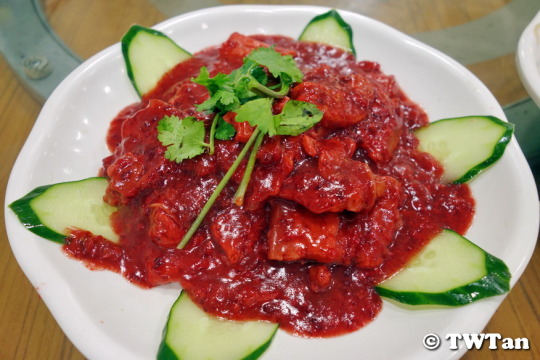
Another pick from sister-in-law, the Deep-Fried Prawns with Salt & Pepper (椒盐虾). The garlicy salt and pepper profile is nice but the prawns are a little small so after frying, there wasn’t much meat to eat and some family members don’t want to get their hands dirty peeling the shells.
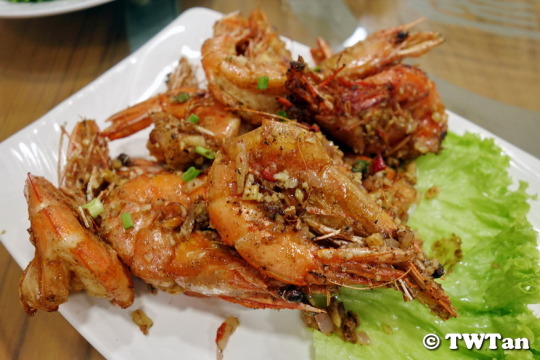
The most expensive dish of the night is this Deep-Fried Squirrel Fish with Fruit Sauce (水果松鼠鱼). A whole fish beautifully sliced and deep-fried then drizzled with sweet and tangy sauce made from fruits. You also get canned lychees and freshly diced pineapples for the fruits portion.

Sis likes this Bean Curd Kailan (豆皮芥兰) which is fried bean curd skin with Chinese broccoli or Chinese kale. Ordered this Prawn Paste Chicken (虾酱鸡) for the kiddos. Appearance wise, the mid-wings are unevenly browned but it made up with surprisingly umami flavours and juiciness. Well, looks can be deceiving.
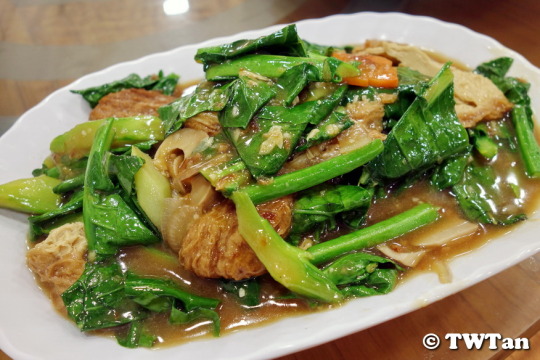
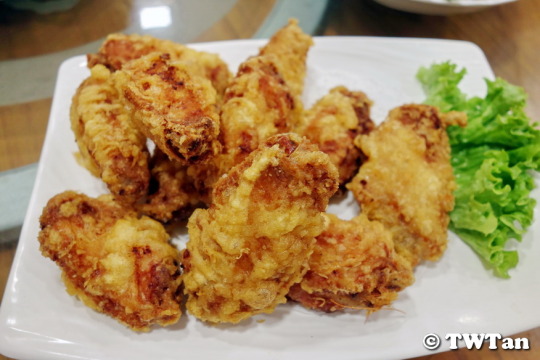
No, this is not braised pork belly but Fragrant Egg Plant (鱼香茄子煲). This claypot brinjal or aubergine is beautiful cooked if a tad salty but perfect with the white rice. There is also a twelve dish, the Salted Fish Fried Rice (咸鱼炒饭) for one of the kid but I did not take photo of.

Here is the Bill for the meal including the rice and refreshments. We ordered ala carte so we picked the dishes we like and it ended up cheaper compared to the expensive set menu the restaurants offered for the actual day (Chinese New Year Eve).
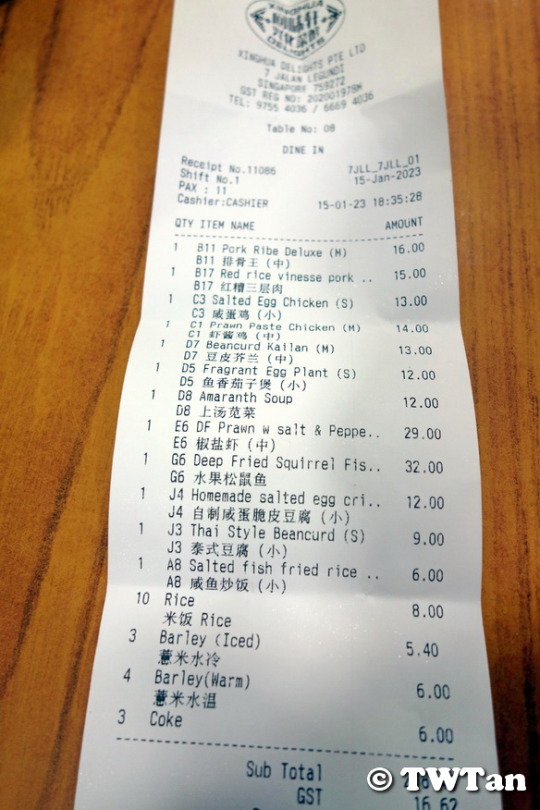
#Reunion Dinner 2023#年夜饭#团年饭#团圆饭#Chinese New Year#Xing Hua Delights#回味轩兴化菜馆#Red Rice Vinesse Pork Belly#红糟三层肉#Prawn#Salt & Pepper#椒盐虾#Squirrel Fish#Fruit#Lychee#Pineapple#水果松鼠鱼#Bean Curd Skin#Kailan#豆皮芥兰#Prawn Paste Chicken#虾酱鸡#Egg Plant#Brinjal#Aubergine#鱼香茄子煲#Dinner#Food#Buffetlicious
26 notes
·
View notes
Text
GUIDE TO INDIAN CUISINE: LIST OF POPULAR INDIAN DISHES BY REGION AND TYPE
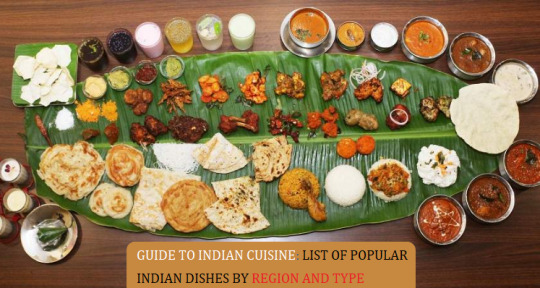
Introduction
Indian cuisine is one of the most popular cuisines in the world. The country has a rich history and culture, which makes it even more special. There are many types of dishes that can be prepared from Indian cuisine. These include sweets, salads, etc. If you are a foodie and planning to visit Jaipur, we recommend you to visit Rooftop Multicuisine Restaurant in Jaipur to have a taste of Indian cuisine.
ABOUT INDIAN CUISINE
Indian cuisine is a reflection of the country’s rich culture and history. The diverse population, climate and geography have led to an amazing variety of food that has been passed down through generations.
Indian cuisine can be broadly divided into a vegetarian (non-meat) and non-vegetarian dishes but meat is also eaten in small amounts (eg mutton). Vegetables such as vegetables like beans, peas, cauliflower, cabbage etc are used extensively in cooking Indian meals. There are many different types of recipes depending on what part of India you live in or what type of preparation style you prefer
CUISINE OF NORTH INDIA
North India is the land of spices, aromas and rich food. The cuisine of north India has been influenced by its neighboring countries like Pakistan, Afghanistan and Iran.
The cuisines of these countries are similar to each other but they also have their own unique flavors which you need to experience before knowing about it. Are you looking for a dining experience unlike any other? Look no further than our rooftop cafe in Jaipur
CUISINE OF SOUTH INDIA
South Indian food is very different from North Indian food. South Indian cuisine is known for its spicy and hot taste, which makes it one of the most popular cuisines in India. The region has a variety of rice dishes, both plain and flavored with coconut milk, turmeric powder or black pepper powder. The most popular dish among all other South Indian cuisines is idli (a type of fermented rice dumpling) served with sambar gravy made from lentils called rasam.
South Indian Dosa consists of a thin crepe made out of gram flour that's stuffed with potatoes or vegetables like brinjal or chutney masala sauce on top along with coconut chutney spread over it before serving hot!
MAIN DISHES – SOUTH INDIA
The South Indian cuisine is very diverse and includes vegetarian dishes that are as flavourful as non-vegetarian dishes. The main course includes rice, rasam (soup) and sambar (a spicy vegetable soup). Rice is served with a variety of curries or dals; each region has its own specialties which can range from bhartha sabzi (mixed vegetables cooked in a mustard oil), dal makhni/dal kitchari (lentils cooked with yogurt and spices) to idli/vada/dosa etc.
DRINKS – SOUTH INDIA
Drinks are an important part of any meal in South India. They can be served as a starter or even as the main course, and they can be given to you by your host at any time during the day.
Drinks are not just for quenching thirst! In fact, most people who visit India will tell you that having some kind of beverage before eating is almost mandatory (and a welcome break from the hot sun). It also helps if other people are drinking too! This makes it easier to get into conversation with new friends—and even strangers—as long as everyone has something sweet in their hands when sitting down at lunchtime (or dinner).
Having so many dishes in a country like India is a blessing. Whether you are traveling or eating at a restaurant, you will get good food every time.
Having so many dishes in a country like India is a blessing. Whether you are traveling or eating at a restaurant, you will get good food every time. The diversity of Indian cuisine is one of its biggest strengths and makes it very hard for anyone to get bored with the same dish over and over again.
Indian food can be healthy and delicious too! There are many different types of foods on offer from all across India including vegetarian options as well as non-vegetarian ones depending on your preferences or dietary needs (for example if you have allergies).
There are also some great benefits associated with eating Indian food: For example, it’s low in fat so helps prevent heart disease; this also means that once again we don't need much exercise to stay fit!
Conclusion
Indian food has always been one of my favorite dishes. I love the variety and I am sure you will too. You can also visit the Top Rooftop Restaurants in Jaipur for a memorable dinner with a fantastic taste.
0 notes